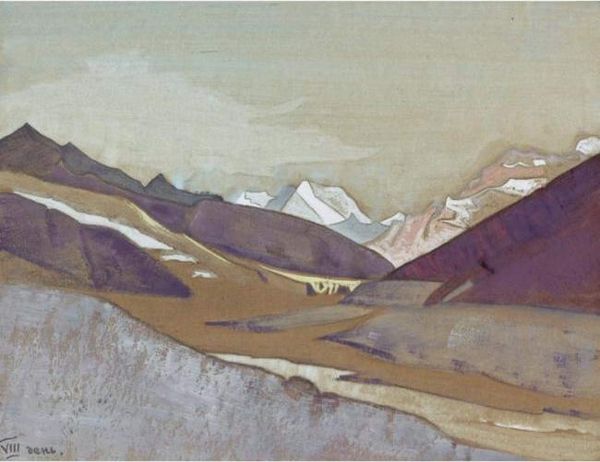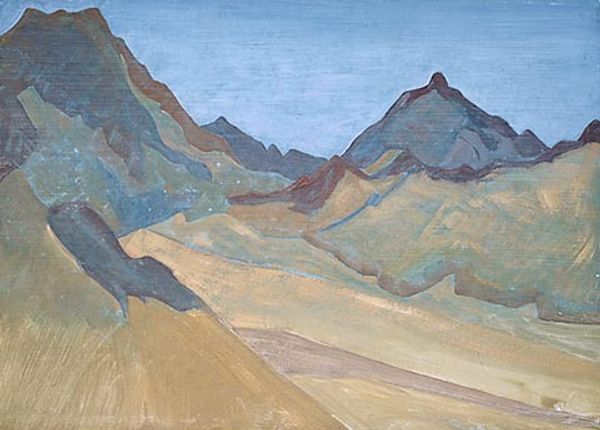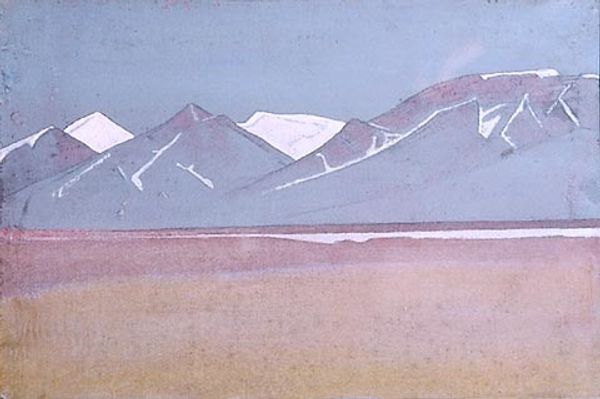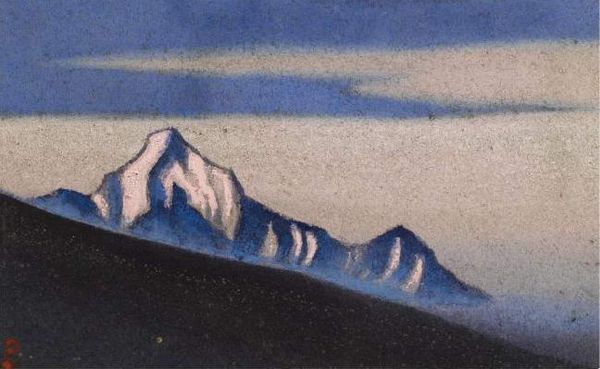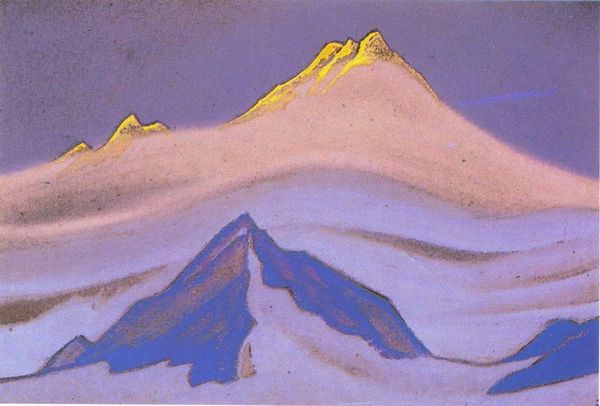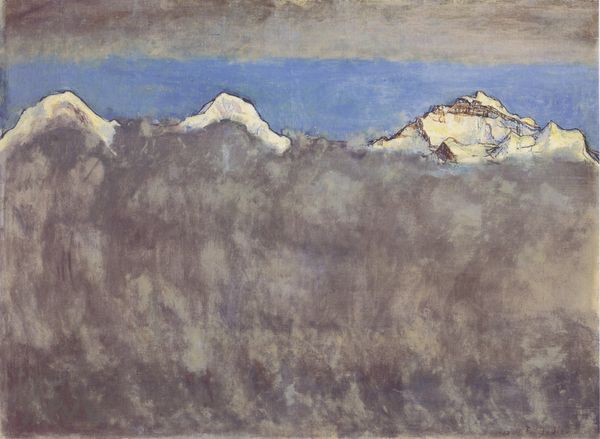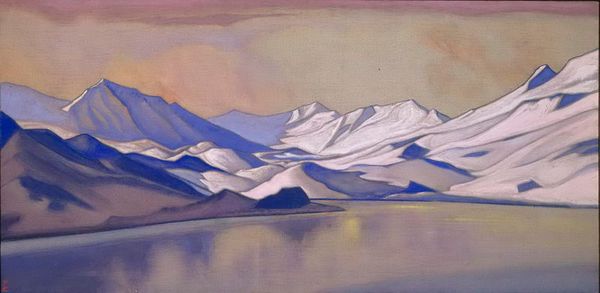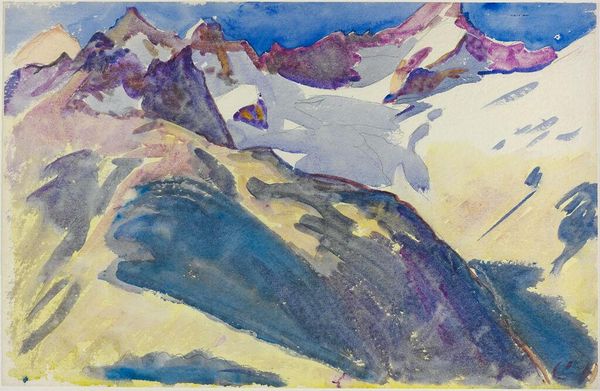
painting, plein-air, oil-paint
#
sky
#
painting
#
plein-air
#
oil-paint
#
landscape
#
oil painting
#
mountain
#
line
#
realism
Copyright: Public domain
Curator: The piece before us, titled "On the way to Shekar Dzong," was completed by Nicholas Roerich in 1928 using oil paint in plein-air style. What's your immediate response to this work? Editor: I'm struck by its cool tonality, it feels both vast and muted. The mountains, though imposing, seem almost ethereal, like a fading memory rather than a solid mass. Curator: Roerich's compositions often play with a flattened perspective. Note how he minimizes detail and relies on geometric forms and linear structures to define the landscape. It simplifies the pictorial space, emphasizing symbolic essence over mimetic accuracy. Editor: Yes, I find the severe geometry contributes to its sense of stillness, of something timeless. Given the socio-political climate of that era, one wonders if that austerity mirrored an atmosphere of quietude amidst change, reflecting the search for permanence amidst upheavals. Curator: Indeed. Roerich was deeply influenced by Theosophy, and aimed to imbue his art with spiritual significance, presenting a mystical East accessible to Western viewers. Look how the subtle gradations in color—the interplay of lilac and ochre—convey a sense of transcendence. This elevates what would have otherwise been a simple plein-air landscape into something symbolic and otherwordly. Editor: That elevation of the mundane definitely reflects the era’s interest in Eastern spiritualism, positioning these remote landscapes as sources of profound enlightenment, ripe for appropriation. And you know, in 1928 Roerich founded the 'Urusvati' Himalayan Research Institute, indicating his commitment to the region's social and cultural significance as well. Curator: The painting seems less about representing a geographical space, but the feeling of seeking something greater, that transcendent state of mind and experience, captured by a delicate balance of colors and form. Editor: So it's a piece that reminds us that a work’s artistic value is as influenced by philosophical underpinnings as by the social and political climate, even those perceived as objective renderings. Curator: Precisely. These mountains of the mind also are part of this world, expressed here with sublime formalism.
Comments
No comments
Be the first to comment and join the conversation on the ultimate creative platform.
